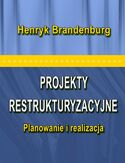Drupal for Education and E-Learning. Teaching and learning in the classroom using the Drupal CMS - Onepress

ebook
Autor: Bill Fitzgerald, Dries BuytaertTytuł oryginału: Drupal for Education and E-Learning. Teaching and learning in the classroom using the Drupal CMS
ISBN: 9781847195036
stron: 400, Format: ebook
Data wydania: 2008-11-27
Ksi─Ögarnia: Onepress
Cena ksi─ů┼╝ki: 116,10 z┼é (poprzednio: 129,00 z┼é)
Oszczędzasz: 10% (-12,90 zł)
Osoby które kupowały "Drupal for Education and E-Learning. Teaching and learning in the classroom using the Drupal CMS", wybierały także:
- Udzia 0,00 zł
- Rachunkowo 0,00 zł
- Changing Paradigm for Inventory Management in a Supply Chain Context 0,00 zł
- Rachunkowo 0,00 zł
- Rezerwy celowe w systemie rachunkowo 0,00 zł





